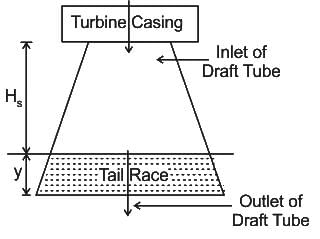Civil Engineering (CE) Exam > Civil Engineering (CE) Tests > Fluid Mechanics for Civil Engineering > Test: Draft Tube - Civil Engineering (CE) MCQ
Test: Draft Tube - Civil Engineering (CE) MCQ
Test Description
10 Questions MCQ Test Fluid Mechanics for Civil Engineering - Test: Draft Tube
Test: Draft Tube for Civil Engineering (CE) 2025 is part of Fluid Mechanics for Civil Engineering preparation. The Test: Draft Tube questions and answers have been
prepared according to the Civil Engineering (CE) exam syllabus.The Test: Draft Tube MCQs are made for Civil Engineering (CE) 2025 Exam. Find important
definitions, questions, notes, meanings, examples, exercises, MCQs and online tests for Test: Draft Tube below.
Solutions of Test: Draft Tube questions in English are available as part of our Fluid Mechanics for Civil Engineering for Civil Engineering (CE) & Test: Draft Tube solutions in
Hindi for Fluid Mechanics for Civil Engineering course. Download more important topics, notes, lectures and mock
test series for Civil Engineering (CE) Exam by signing up for free. Attempt Test: Draft Tube | 10 questions in 30 minutes | Mock test for Civil Engineering (CE) preparation | Free important questions MCQ to study Fluid Mechanics for Civil Engineering for Civil Engineering (CE) Exam | Download free PDF with solutions
Test: Draft Tube - Question 1
Approximate head gain due to installation of a tapered draft tube after a turbine, if the discharge is 9.42 m3/s, draft tube inlet and outlet diameter respectively is 2 m and 4 m with the efficiency of 90 %.
Detailed Solution for Test: Draft Tube - Question 1
Detailed Solution for Test: Draft Tube - Question 2
Test: Draft Tube - Question 3
Which of the given statements is correct regarding the primary function of a draft tube?
Detailed Solution for Test: Draft Tube - Question 3
Detailed Solution for Test: Draft Tube - Question 4
Detailed Solution for Test: Draft Tube - Question 5
Detailed Solution for Test: Draft Tube - Question 6
Detailed Solution for Test: Draft Tube - Question 7
Detailed Solution for Test: Draft Tube - Question 8
Detailed Solution for Test: Draft Tube - Question 9
Detailed Solution for Test: Draft Tube - Question 10
|
54 videos|96 docs|110 tests
|
Information about Test: Draft Tube Page
In this test you can find the Exam questions for Test: Draft Tube solved & explained in the simplest way possible.
Besides giving Questions and answers for Test: Draft Tube, EduRev gives you an ample number of Online tests for practice




























